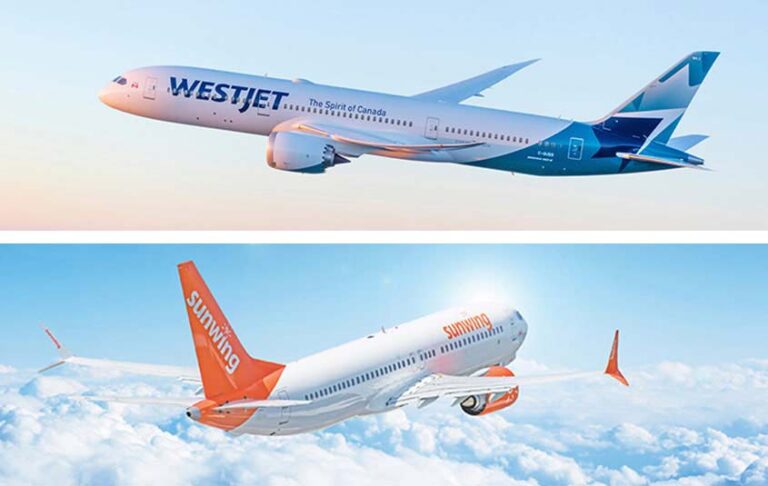WestJet Airlines Announced Completes Merger
WestJet Airlines Completes Merger: A New Era in Canadian Aviation
In a groundbreaking move within the aviation industry, WestJet Airlines has officially completed its merger with Sunwing Airlines, creating what is poised to be a dominant force in the Canadian airline market. The merger, which has been in the works for months, was approved by the Competition Bureau of Canada and regulatory bodies, and now marks a significant shift in the competitive landscape of the country’s aviation sector. This strategic consolidation is set to reshape the future of air travel both domestically and internationally, offering new opportunities for passengers, employees, and stakeholders.
The Strategic Significance of the Merger
The decision to merge WestJet and Sunwing Airlines was largely driven by a combination of market pressures and the evolving needs of the airline industry. Both airlines have long been recognized as prominent players within the Canadian travel and tourism industry, but they operated in slightly different segments of the market. WestJet has long been Canada’s second-largest airline, specializing in low-cost, scheduled domestic and international flights. Sunwing, on the other hand, has been a leader in the leisure travel space, offering chartered flights and vacation packages, particularly to destinations in the Caribbean, Mexico, and Central America.
By merging these two companies, the resulting entity can provide a wider range of services that appeal to a broader customer base, ranging from budget-conscious travelers to those seeking more luxurious holiday experiences. This integration also allows for the optimization of resources, including fleet management, scheduling, and customer service, making the combined entity a more competitive player on both the national and international stage.
Strengthening Market Position
Before the merger, WestJet and Sunwing were operating in an increasingly competitive market, particularly with the rise of low-cost carriers and major global airlines expanding their services in and out of Canada. By merging, the two companies are positioning themselves to better compete with Air Canada, which has historically dominated the Canadian airline industry. The consolidation of resources allows the new entity to streamline operations, reduce costs, and offer more competitive pricing for passengers.
The merger is also expected to bolster the airlines’ ability to negotiate favorable deals with suppliers, including aircraft manufacturers and fuel providers, thereby reducing operational costs in the long run. Furthermore, the integration will allow for a more unified approach to marketing and customer outreach, resulting in a stronger brand presence.
Benefits for Passengers
One of the most significant benefits of the merger is the increased convenience and variety of options available to passengers. The combined airline will now operate a larger fleet, offering an expanded network of destinations both domestically and internationally. The merger also allows for greater coordination in scheduling, meaning passengers will have more choices when booking flights, as well as improved connectivity between cities and regions.
WestJet’s expertise in low-cost domestic flights and Sunwing’s robust vacation packages will enable the new entity to cater to a wider array of travel preferences. Whether a traveler is seeking a budget-friendly flight within Canada or a luxurious all-inclusive vacation package, the merged airline will be able to deliver both types of services more efficiently. The increased range of options also means that customers can book everything they need through a single provider, from flights to accommodation and other vacation experiences, simplifying the entire travel planning process.
Operational Efficiency and Cost Savings
As with any corporate merger, one of the primary motivations is to increase operational efficiency and reduce costs. The combined airline will benefit from economies of scale that arise from the merger. By pooling resources, both companies will be able to share operational costs across a larger network. For example, by combining their fleets, WestJet and Sunwing will be able to standardize aircraft types, making maintenance and training more efficient. This reduces overhead costs and helps the airline provide more consistent service to passengers.
Furthermore, the consolidation of back-office functions such as customer service, marketing, and sales will streamline operations and allow for better coordination across the business. With fewer redundancies in operations, the company can focus on providing better service, improving technology, and reducing operational inefficiencies. Additionally, the merger allows for better negotiation on fuel contracts and other vendor relationships, further driving down costs and improving profitability.
Expanding International Reach
A key goal of the merger is to enhance the international reach of the new airline. Sunwing has a strong presence in the vacation market, especially in the Caribbean and Mexico, while WestJet has been expanding its international footprint in recent years, particularly in the United States and Europe. Together, the airlines can now offer a more extensive range of international routes, attracting both leisure and business travelers.
The merger will also provide increased access to international vacation packages, which are particularly attractive for Canadians looking to escape the harsh winter months. The ability to combine WestJet’s low-cost travel model with Sunwing’s vacation expertise creates a compelling offering for customers seeking both affordability and the luxury of a packaged vacation experience.
Potential Challenges and Integration Process
Despite the many advantages of this merger, there are also several challenges that will need to be addressed. One of the most significant challenges will be the integration of the two companies’ corporate cultures. WestJet has long been known for its laid-back and friendly atmosphere, while Sunwing’s culture has been more focused on the luxury and leisure sector. Harmonizing these cultures will be essential to maintaining employee satisfaction and ensuring a smooth transition as the two companies work to integrate their operations.
Additionally, there may be some disruption for passengers as the companies integrate their booking systems, flight schedules, and customer service platforms. Travelers may encounter some initial confusion or delays as the airlines work to synchronize their operations. However, WestJet has assured its customers that it is committed to making this transition as smooth as possible and minimizing any disruptions to their service.
Economic Impact
The merger is also expected to have significant economic implications, both for the Canadian economy and for the global aviation industry. As the combined airline strengthens its position in the market, it will likely create new jobs in various sectors, including customer service, flight operations, and maintenance. The expanded network will also drive more tourism, especially to popular vacation destinations that are now more accessible due to the enhanced flight offerings.
Furthermore, the merger is expected to contribute to the recovery of the Canadian travel industry, which, like the global sector, was hit hard by the COVID-19 pandemic. By offering a broader range of flight options and more competitive pricing, the new airline will encourage more people to travel, thereby helping to stimulate demand in the tourism, hospitality, and other related industries.
Looking Forward
The completion of the WestJet-Sunwing merger is just the beginning of what could be a new era in Canadian aviation. As the two airlines work to integrate their operations and align their business models, they will undoubtedly face challenges. However, the potential benefits for passengers, employees, and the broader Canadian economy are significant.
By offering a broader range of services, strengthening their market position, and improving operational efficiency, WestJet and Sunwing have positioned themselves to become a formidable competitor in both the Canadian and global airline industries. As the dust settles from the merger, passengers can look forward to greater travel options, more competitive pricing, and an improved overall flying experience. With the support of both companies’ loyal customers, the combined airline will likely soar to new heights in the years to come.





